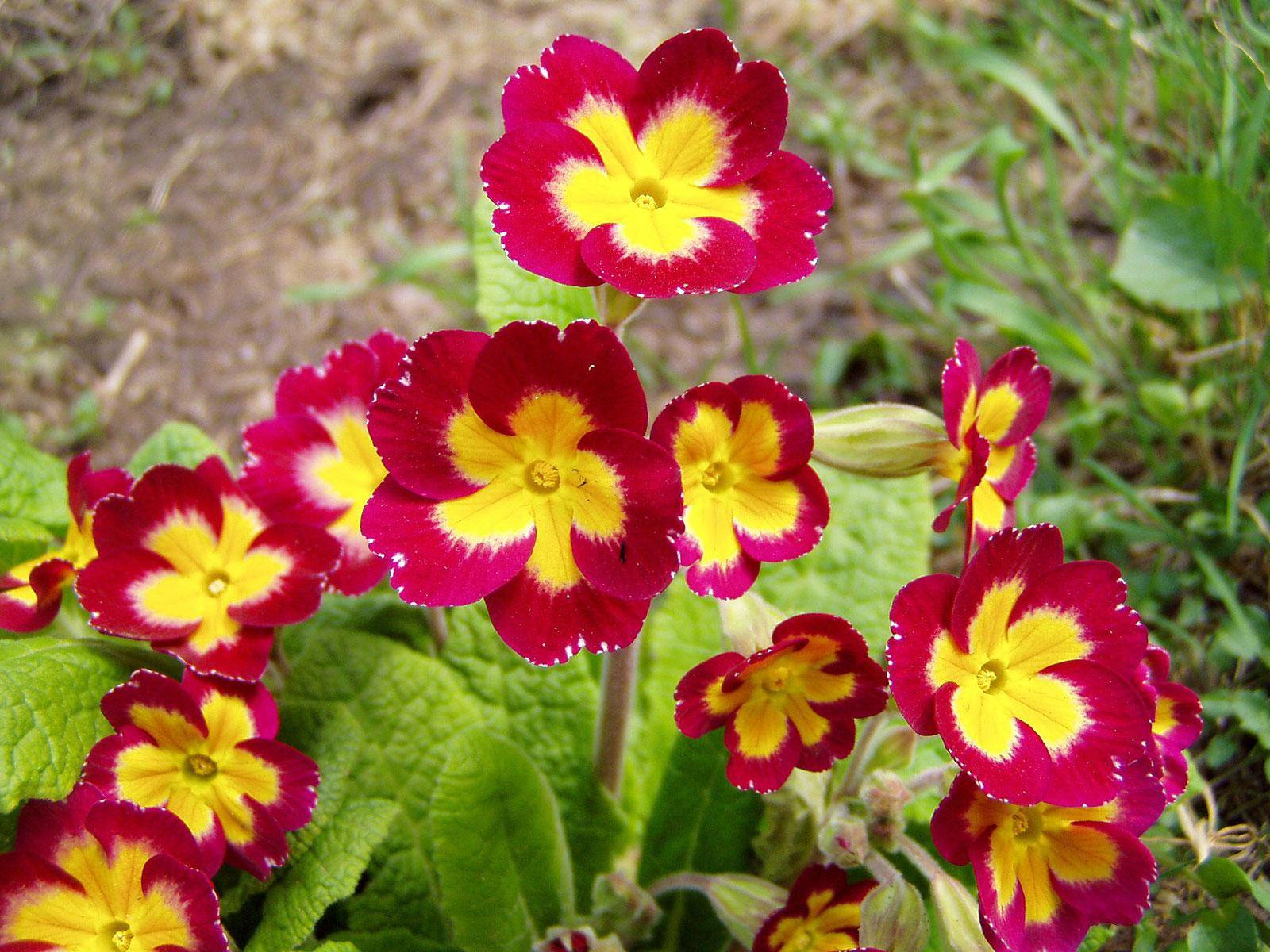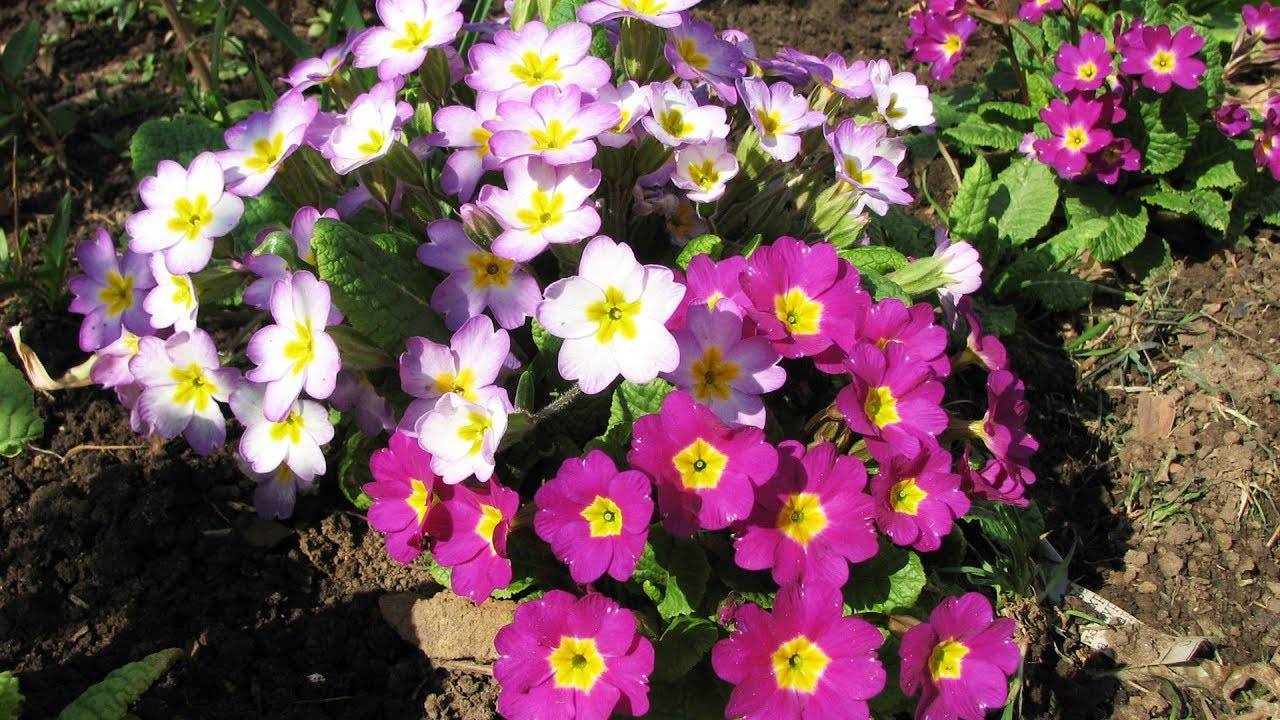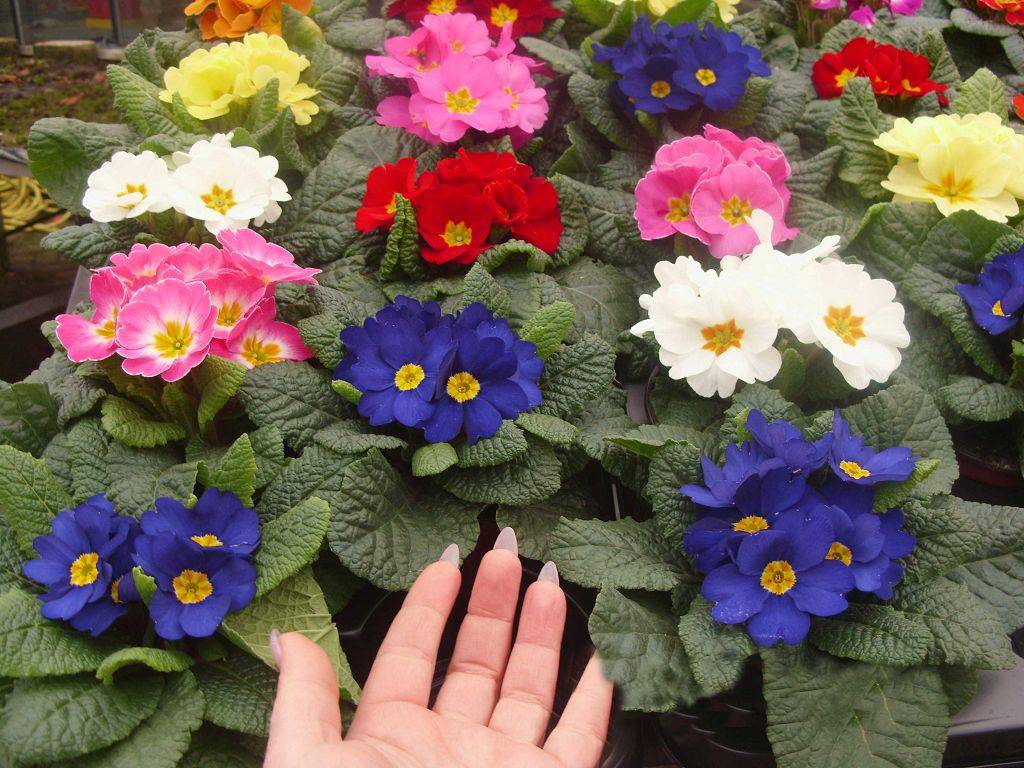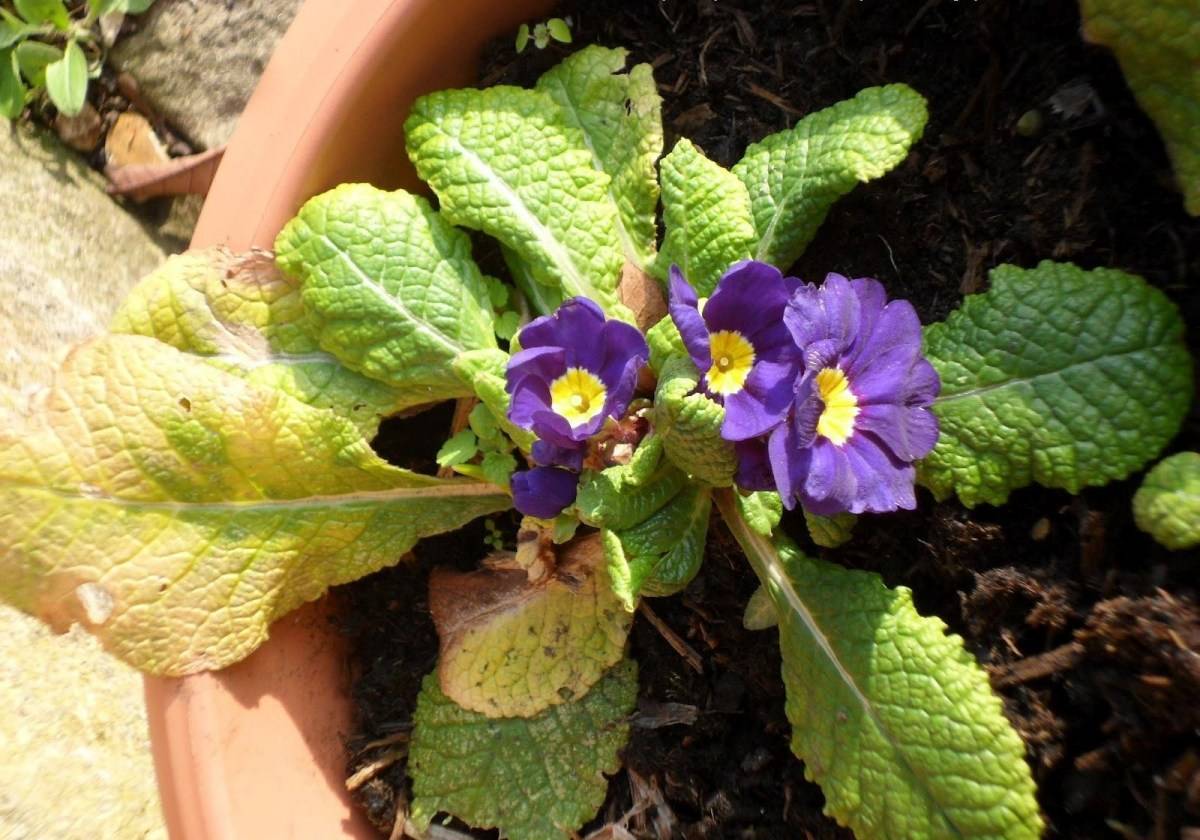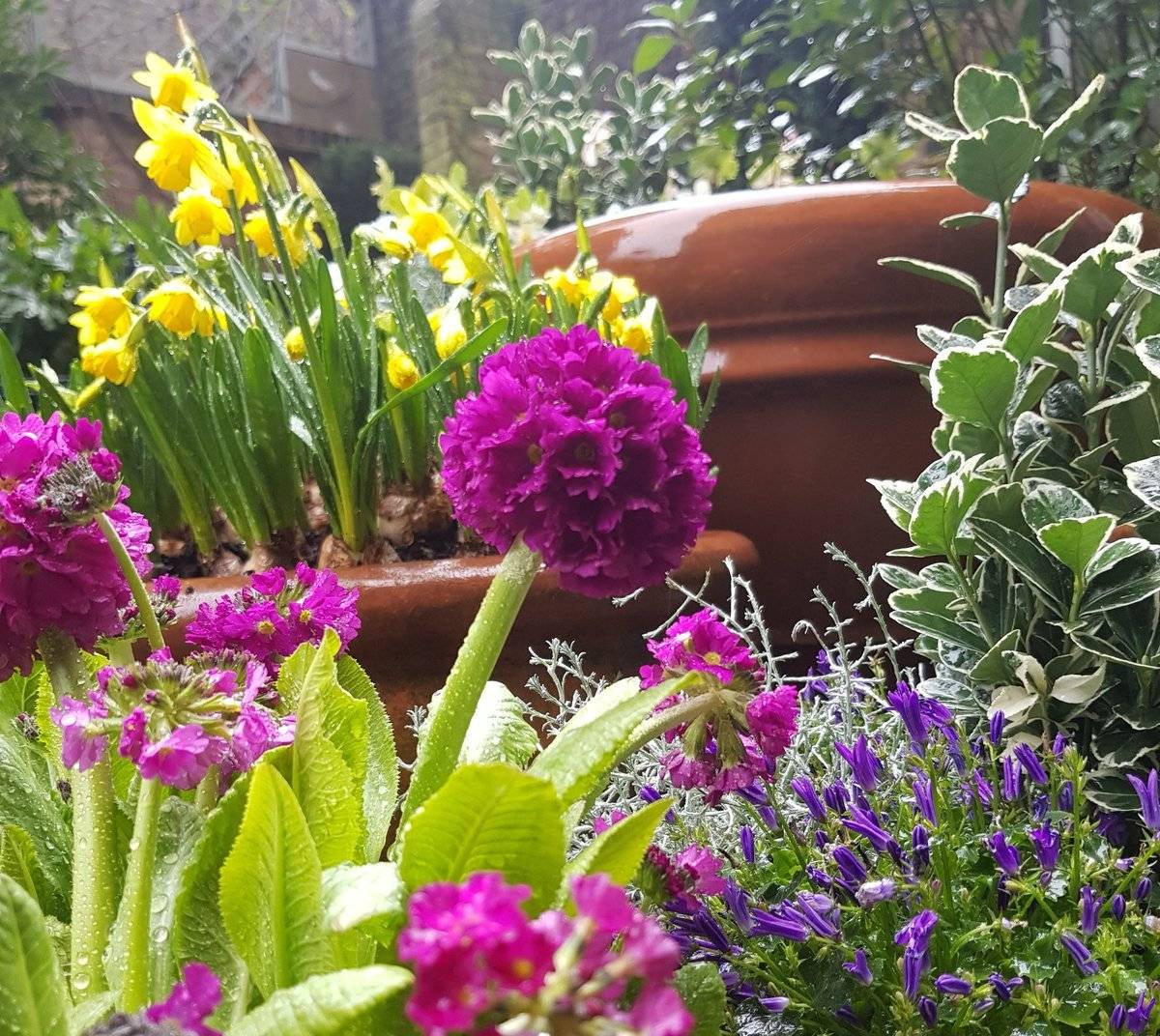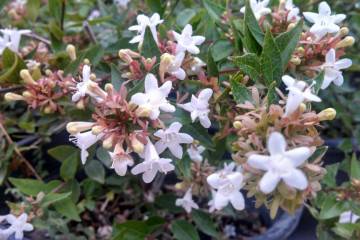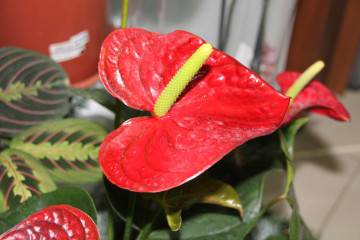Primrose transplant: at home and breeding methods
Content:
The primrose attracts flower growers with its appearance and ease of care. In order to provide this plant with healthy living conditions, it needs to be transplanted regularly. So that the flower does not disappear after a change of place, you need to know how the primrose transplant is performed. You need to make the right substrate, find a place and make the necessary preparation.
Transplant rules
Since any type of transplant is stressful for the plant, you first need to determine if it is worth replanting at all. In order not to spoil the plant already in the process of transplanting, it is advisable to take into account several important nuances. You need to know when to plant the primrose by division, as well as where it is better to plant the specimen, and in what substrate.
The high temperature is not suitable for the flower. In order for the plant to root faster and get used to the new place, the transplant should be carried out when the above-zero temperature of about 13 - 15 degrees is established outside. Only one of the species will not take root if the temperature is below 16 - 18 ° C - Reverse conical primrose.
Dependence on the variety and type
To determine exactly when to transplant primrose - in spring or autumn, you need to know not only the specific type of variety, but also how many years a specimen can be grown in one place. Perennial species require periodic change of location, and annuals can plant during the growing season.
Usually the following rule applies: annual representatives of the culture are planted exclusively in the spring (early to mid-March), and perennials only in the fall (early to late September). Using this recommendation, it is not necessary to individually select the time of planting a bush.
Time and place
Usually, the transplant is carried out after the bush has reached a very large size. The question arises as to when to plant primrose so that the specimens have time to root well. September is considered the ideal moment. The first month of autumn is still warm enough, which makes it possible to fully develop. Then the temperature gradually decreases, which hardens the plant.
Transplant frequency
Perennial primrose requires 1 change of location in 3-4 years. This is a rather unpretentious flower that does not require too much attention to itself. A perennial primrose, planting and home care for which is performed in the complex, needs a transplant for the following reasons:
- Decreased growth and flowering activity. Minimized number of buds.
- If the bush grows strongly and at the same time deformation of the leaf occurs.
- If the soil is infected with serious diseases, it is imperative to transplant the bush at another time.
- When the root system or stem neck is exposed. If this problem is not eliminated in time, then the root system will undergo serious stress or disease.
You also need to take into account the type and variety of primrose - the number of transplants and the principle of their implementation depends on this. For example, for the Japanese primrose, a single transplant at 4 years old is considered standard.
Home care rules
Caring for primrose in a pot at home and gardening is not difficult.Still, some of the rules are worth following. In addition to planting an instance in a place suitable for a flower, a number of conditions must then be met.
Ear primrose, planting and care of which consists in the following steps, will bloom in the second year of life:
- Organization of correct watering. It is not only the regime that is important, but the process itself.
- The soil should be suitable for the crop. You can cook it yourself or buy it in the store.
- You need to know what and in what quantity to apply fertilizers for feeding. It is important to consider the growing and dormant periods.
- Illumination is also very important for the species. Initially, a correctly selected place will save the plant from death.
An additional factor may be air humidity, but this is exclusively for indoor specimens, since garden specimens are more resistant to negative climatic conditions. But here, too, you need to know a few simple but effective techniques that help keep the flower in good condition.
Watering
Both indoor and garden primrose species love a certain order in terms of watering. It is important to do everything on time. The flower does not like a lot of moisture, but it also tolerates drought rather poorly. So that water does not linger in the soil, it is worth loosening the soil after each watering. In order not to harm the flower, it is advisable to irrigate with well-settled water at room temperature.
It is impossible to establish an exact schedule - irrigation is carried out only after the top layer of soil under the leaves has dried. It is not necessary to fill in a lot of water, for example, for a large bush, 1 liter of water is enough.
The soil
It does not matter where the plant will be placed in the open field or in a pot, the soil should be as suitable for growth as possible. Usually, the substrate is prepared by themselves, since the recipe is completely simple. You can buy a ready-made mixture that is designed specifically for primrose.
It is necessary to take in equal parts sod, coniferous, peat soil and mix all the components. In the garden version, mixing also takes place with the ground from the hole. In some cases, river sand is added instead of the local part of the land.
Fertilizer
Some growers argue that transplanting a primrose after flowering does not affect the quality and condition of the plant in any way. But it is advisable to do such manipulations only in the most extreme cases.
What fertilizer options are better to use:
- For home primroses, complex or special organic fertilizers, which are available in a regular store, are suitable as top dressing.
- In the spring, it is best, especially in those conditions that may be unusual for a novice gardener, and for a primrose - in the order of things, to feed the primrose with phosphate-nitrogen fertilizers, and this can be done directly by spreading the fertilizers over the snow. An option is relevant if the leaves have already begun to break through.
- For example, after the spring feeding is carried out, it is desirable to repeat it in the fall, but if there is a need for the plant to somehow renew, inspire and delight, you can feed it again in the summer or better by the end of summer.
In any case, primrose can be planted correctly and in good soil, but you can never wait for a lush flowering. In such a situation, it is worth feeding the plant.Sometimes flower growers buy a ready-made substrate and add 20% of sandstone to it, but this is done only if the plant is at home.
Immediately after the primrose is transplanted in the garden, it does not need feeding. It will be needed a few months later, when the flower takes root in a new place. It is best to do natural feeding, chicken droppings are well suited. It is diluted 1:15, but no more. Fertilizer should be applied once every few weeks.
Illumination
The flower does not like too active lighting. May be killed by direct sunlight. But planting a culture in a completely darkened place is not worth it. The ideal degree of illumination will be the partial shade option - under a tree, tall and spreading shrubs, in the shade of a hedge.
Thanks to such preferences, flower growers can place a plant in the most distant and remote parts of a flower bed or garden, without fear for the condition and development of the specimen. Primrose will be a green addition to any flower arrangement.
Possible diseases after transplant
The flower is loved by many pests, so you need to carefully monitor the condition of the plant after planting. Problems can arise not only due to the incorrect movement of the specimen to a new place, but also due to untimely sowing and planting of seedlings. In order for the primrose to take root well, you need to properly care for it, do everything necessary for the normal development of all components of the bush.
Downy mildew
Most often, young specimens suffer from peronosporosis (downy mildew), which actively damages the ground part, and subsequently the root. If the specimen bloomed at the time of defeat, then the buds and pedicels will be oppressed. The disease manifests itself a month after the start of the growing season or a month before the transition to a state of dormancy.
Downy mildew occurs after strong temperature fluctuations day and night. A difference of 10 degrees is enough. The fungus appears quite clearly - white areas form on the leaves, which outwardly resemble flour powder. Over time, the leaf plate begins to deform and completely dies.
Spots on the leaves are yellow
If you do not follow the rules on how to transplant a primrose to a new place, taking into account all the nuances, then ramulariasis may develop. The disease manifests itself in several stages:
- Asymmetrical yellow spots appear on the leaves first.
- Growing up over time, yellowing darkens, acquiring a brown color.
- Literally in a few days, the second phase turns into the third - brown spots begin to dry and form through holes.
Usually the favorite period for the development of ramulariasis is summer. The reason for the appearance is the wrong irrigation regime and poor oxygen access. To solve the problem, you need to establish an irrigation procedure and loosen the ground at least 2 times a week.
Gray stains
There is another aggressive disease that can significantly harm the flower - this is gray rot. Gray rot is caused by the activation of a disease-causing fungus called Botrytis cinerea Pers.
A good environment for the development of such a microorganism is a warm autumn, strong soil moisture and lack of oxygen access to the root system. Spots with a gray bloom appear on the leaves, which become sticky over time.
It is advisable to protect a plant of this type from pests and diseases, since the aerial part is very sensitive and fragile, so the plant quickly withers and deteriorates. Fungal diseases and parasites are considered especially dangerous. For some reason, it was primrose that slugs liked so much, which in just a few hours can completely destroy 1 unit.
If you have to divide a bush in order to plant a specimen, then you need to know exactly all the rules and nuances of this type of transplant. First and foremost, it is important to determine when to transplant primrose. It is worth considering the simplest rules regarding the choice of soil, irrigation regime, illumination and temperature regime. If you follow all the recommendations, then after a year you can see how the house has changed thanks to the bright colors of primrose flowers.
